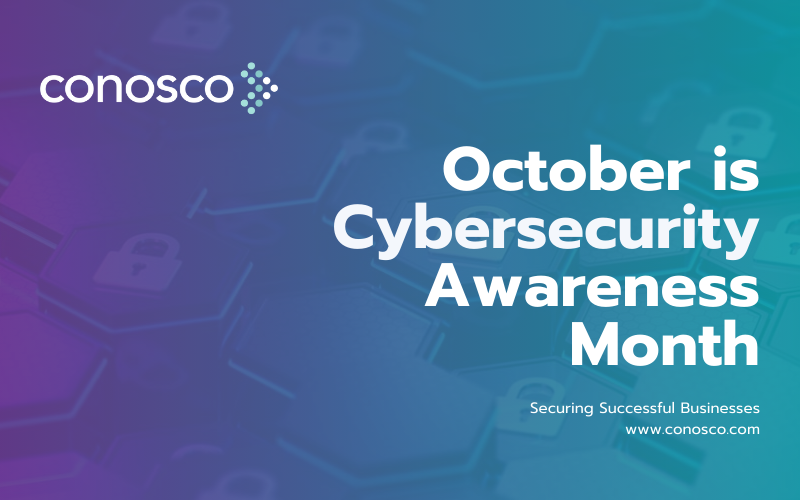Long read: what the BBC got right, and where leaders must push further
by Aaron Flack on Oct 8, 2025

This long-form analysis responds to the BBC’s investigation, “The true cost of cyber attacks – and the business weak spots that allow them to happen,” examining the incidents that halted Jaguar Land Rover, disrupted Marks & Spencer and Co-op, and exposed the fragility of the UK’s critical supply chains. It expands on the BBC’s findings with a practitioner’s perspective: how structural weaknesses, complacent risk models, and outdated operating assumptions have turned isolated breaches into systemic economic shocks — and what must change before the next one hits.
You can read the orginal BBC indepth here: BBC In-depth: The true cost of cyber attacks - and the business weak spots that allow them to happen
The BBC’s analysis of recent attacks exposes an uncomfortable truth: British businesses are paying a compound interest bill on years of structural cyber debt. The headlines dwell on single incidents; the real cost sits in the economic fragility created by supplier pyramids, identity sprawl, brittle recovery, and decision-making that has never been rehearsed under pressure. Jaguar Land Rover’s shutdown has become the emblem of this fragility. Production was paused for nearly six weeks, and phased restarts only began in early October. The knock-on risk to suppliers required government support and accelerated payments to keep the ecosystem alive. That is not a one-company problem; that is a supply chain and national productivity problem.
Marks and Spencer presents the other side of the ledger, a consumer brand hit at the point of sale and fulfilment. The company guided to a three hundred million pound impact on operating profit after the April ransomware breach, with web commerce suspended for weeks and recovery plans stretching into July. Insurance will soften part of the blow, not all of it. That distinction matters when boards infer that insurance is a parachute, because it is not a time machine. It does not give customers their time back or erase reputational drag in search and social.
Co-op is a live case study in how quickly an incident becomes a P&L event in UK retail. The group reported 206 million pounds in lost revenue and expects a 120 million pound full-year profit hit, even after decisive containment. Limited policy cover for back-end losses undercuts any hope that a cheque will fix everything after the fact. The economic signal is clear: the most significant costs accrue after the lights come back on.
Aviation shows the systemic risk in sharper relief. A ransomware strike on Collins Aerospace’s widely used check-in and baggage systems forced Heathrow and other European hubs to revert to manual operations, with queues, cancellations, and network-wide knock-on effects. The vendor’s platform became a single point of visible failure at scale. Airports recovered; the lesson should not be filed as a one-off. Supplier concentration risk in critical workflows will keep turning local incidents into continental delays.
The BBC is right to connect the dots. UK regulators and boards left too much to best efforts and annual audits. The government has now set out a Cyber Security and Resilience Bill with stronger duties, a broader scope for essential and digital services, and more precise incident reporting requirements. That is positive, but timing matters. Leaders should act now, not wait for commencement orders. The National Cyber Security Centre has warned of a growing divide between organisations that can keep pace with AI-enabled threats and those that cannot, with the gap expected to widen over the next two years. If your operating model assumes yesterday’s threat curve, you are giving your competitors a head start on future outages.
This is how to read the true cost question through a UK board lens, then fix the weak spots the BBC highlights.
Where the analysis lands, and where it is too gentle
Just-in-time is efficient when failure is rare and local. Ransomware makes failure frequent and contagious. Automotive and food retail built lean chains with razor-thin buffers. When an upstream identity or data event occurs, there is no slack. JLR’s shutdown rippled across thousands of suppliers, prompting a government loan guarantee and emergency payment terms to stabilise smaller firms.
Retail shows a different weakness. When a third of sales run through digital and fulfilment systems, a forced shutdown becomes an amputation, not a flesh wound. M&S’s guidance quantified that reality, hundreds of millions wiped from operating profit. The point the BBC glances at, and leadership must not, is that unit economics and customer behaviour mutate during recovery. Basket sizes change, loyalty shifts, and adversaries test stolen data for months. Profitability takes longer to heal than uptime.
Aviation underscores systemic concentration of risk in third parties. When Heathrow and others revert to clipboards, the public notices. Boards should assume there are similar hidden chokepoints in their own stack, only quieter. You are unlikely to have a single provider for check-in; you might have an under-the-radar middleware component that would break your entire settlement process or warehouse routing if it were encrypted for twelve hours. The scale is different, the fragility is identical.
The cost stack leaders actually feel.
Think in layers, not headlines.
-
Direct revenue interruption, forced closures or suspended online routes to market, with measurable daily burn. M&S is a clean example.
-
Margin compression during recovery, overtime, manual workarounds, write-offs, and contract penalties.
-
Supplier bailouts or accelerated payments to prevent upstream failure are now on public record.
-
Premiums and exclusions. Cyber insurance may cover incident response and some losses, but it rarely fully backfills revenue losses and often excludes ransom payments or indirect harm. Co-op’s disclosures illustrate the gap.
-
Governance friction. Lenders, auditors, and regulators will scrutinise controls, restore testing, and reporting accuracy. Time is money here; every extra cycle delays normal trading.
-
Reputational drag. Search surfaces the incident for months. Customers and partners negotiate harder. Talent hesitates.
Boards recognise this pattern in other risks. The difference here is speed, scale, and the ease with which third parties amplify blast radius.
A firm stance: never pay a ransom
Refusing ransom is an ethical position; it is also a practical one in the UK.
Paying does not guarantee decryption, it does not prevent a second extortion round, and it may breach legal and regulatory expectations where sanctions or criminal facilitation risks apply. It compounds reputational harm if disclosed, and it incentivises repeat targeting. Insurers increasingly narrow cover, and even where initial response support exists, policy wording often excludes consequential losses. Co-op’s experience makes that clear in public numbers.
Never pay works only if recovery is credible. That demands investment before the attack. The plan is not a slogan; it is a set of design decisions that remove the attacker’s leverage.
A pragmatic recovery-by-design blueprint:
-
Immutable, logically air-gapped backups across data domains with different credential planes, not just storage tiers.
-
Regularly witnessed restore tests on production-sized datasets, including crown-jewel applications such as ERP, WMS, and point of sale. Pass or fail is immaterial; learning speed is.
-
Rapid rebuild playbooks for laptops, servers, and key SaaS platforms, with pre-approved procurement and image pipelines.
-
Secrets management with emergency rotation scripts and a tested process for expiring and reissuing keys at scale.
-
Precise legal and regulatory choreography, including how and when to notify the Information Commissioner’s Office and sectoral regulators.
-
Pre-agreed communications templates for customers, suppliers, banks, and insurers. One voice, one timeline.
-
Cyber extortion tabletop exercises with executive participation, including simulated data-leak threats and media pressure.
With these in place, ransom demands become background noise. Without them, they become board-level crises within hours.
Five weak spots that turn incidents into economic events
Third-party access and shadow dependencies.
The most significant risk multiplier is not your firewall; it is what runs through it. Supplier integrations, managed platforms, shared identities, and middleware are the quiet arteries of your business. When a vendor is hit, your exposure is defined by the scoping and monitoring you insisted on before the breach, not the press release after. The Collins Aerospace incident is a public case in point. Airlines and airports that had credible manual fallbacks coped. Those without suffered longer and louder. In other sectors, the equivalent might be your payment service provider, your warehouse control system, or a single sign-on plugin for your customer portal.
Identity and privilege.
Multi-factor authentication fatigue attacks, social engineering, and token theft have become routine. Retailers and manufacturers have faced well-organised, English-speaking groups leasing tooling and tactics from more established crews. UK arrests linked to attacks on M&S and Co-op demonstrate the blend of teenage bravado and professionalised playbooks. Treat identity like a hazardous material, not a convenience feature. Rotate more, grant less, log deeper, and separate admin from day-to-day identity completely.
Data resilience gaps hidden by green dashboards.
Backup success rates mean little if you cannot restore at business speed with verified integrity. The test is not whether you have copies; it is whether you can rebuild the operational heartbeat in hours, not weeks.
Flat networks and over-permissive service trust.
East-west traffic must be treated as hostile by default. Segmentation is no longer a project; it is a standard. Identity-aware proxies, service-mesh policy, and strict egress rules change the blast-radius geometry.
Decision-making under pressure.
Most organisations overrate their incident command. The minute you shut down core systems, procurement, legal, communications, technology, operations, and finance have to move in lockstep. If they have not practised the choreography, they will step on each other’s toes. That costs real money fast.
The UK policy angle leaders should internalise
The government’s policy statement for the Cyber Security and Resilience Bill sets the direction. Expect a broader scope for who counts as essential, tighter incident reporting, and more scrutiny of supply chain resilience. You cannot afford to wait for the letters to arrive. Update your operating model now, and assume regulators will ask how you verify suppliers continuously —not annually —and how you would prevent a vendor failure from cascading into a public outage. Use public resources as your baseline and document board oversight; do not rely on best endeavours language.
Combine that with the NCSC’s warning on an AI-driven divide, and you get a simple message. Organisations that invest in identity-first controls, supplier assurance, and practised recovery will widen the gap during the next two years. Those who treat cyber as a cost to be shaved will keep making headlines they would rather avoid.
Lowering the true cost of cyber incidents demands more than better tools, it requires a complete shift in how businesses operate day to day. The most resilient UK organisations are moving away from static controls and annual questionnaires towards continuous assurance. They treat supplier relationships as living systems, not paperwork. Real-time signals, software bills of materials, and active vulnerability disclosures are becoming the norm. Third parties are granted access only through segregated identities and hardware-backed authentication. When a vendor refuses, the relationship is fenced with hard technical boundaries and clear contractual consequences.
Security now begins with identity. The strongest organisations accept that the network perimeter is obsolete; the real perimeter is who you are and what you can do. Phishing-resistant authentication is mandatory for anyone with privileged access. Secrets rotate automatically, and any risky action triggers extra verification. Continuous monitoring catches anomalies in real time and kills sessions before they become breaches.
Data is no longer pooled in sprawling domains. Systems are grouped by business criticality and tolerance for loss, with small, self-contained zones that can be restored independently. The goal is simple: if one area is compromised, it stays contained, and recovery is measured in hours, not weeks.
Practised recovery separates the survivors from the victims. Quarterly restore tests on real data, observed by executives, expose the friction that only surfaces under pressure. The exercise is not about perfection; it is about speed of learning. Over time, recovery should feel as routine as a fire drill— predictable, practised, and unremarkable.
Leadership must also rehearse its own choreography. Every organisation needs a clearly named command structure, with defined decision rights and deputies who can step in instantly. The playbook, both digital and physical, should already include drafts of regulator notifications and public statements, written in calm daylight, not at 2 in the morning.
And then there is public signalling. Customers and suppliers deserve to know the stance upfront. Publish the never-pay policy. Explain the recovery design. Make communication channels visible before they are needed. Silence invites speculation; transparency buys patience.
Boards that accept the status quo will inherit its failures. Those ready to act can begin with a few simple decisions: put the ransom policy in writing and sign it at board level; witness a full restore test of a critical system and learn where time is lost; demand supplier attestations for identity and recovery readiness; move every privileged user, internal or external, to hardware-backed authentication; tighten egress controls around the systems that matter most; and run an honest tabletop exercise that includes finance, legal, and communications. Measure how long it takes to make a decision and then halve it.
Legislation will catch up eventually, but resilience cannot wait for law. Align now with the government’s cyber resilience direction, define exactly who would notify regulators, how quickly, and with what evidence. The organisations that practise this discipline today will be the ones still trading tomorrow.
Closing perspective
The BBC is right to say the economic cost is rising and that a run of inaction is being cashed out in public. Recent UK cases show that scale and speed have outgrown old assumptions. JLR’s multi-week halt and supplier stress, M&S’s quantified profit hit, and airport disruptions flowing from a single vendor all point to the same diagnosis. Cyber is no longer a technical hygiene topic. It is an operational discipline and an economic security choice. The organisations that treat it that way will absorb incidents and keep trading. The ones that do not will keep discovering how expensive cheap decisions can be.
Speak to our security team about pivoting your business stance to be ready for the next attack.
You might be interested in our portfolio of solutions
You May Also Like
These Related Stories

October Cybersecurity Awareness: Stay ahead of cybercrime
With October’s cybersecurity awareness month helping us focus, we’ve been thinking about how to stay ahead, efficiently. …

When one portfolio company gets hacked, you all pay.
Portfolio companies don’t face a single cyber risk. They face a networked risk. A compromise at one portfolio company of …

Risk vs reward: balancing cyber budgets for the next financial year
Depending on the start of your financial year, most businesses should be well into their financial planning by now, with …
